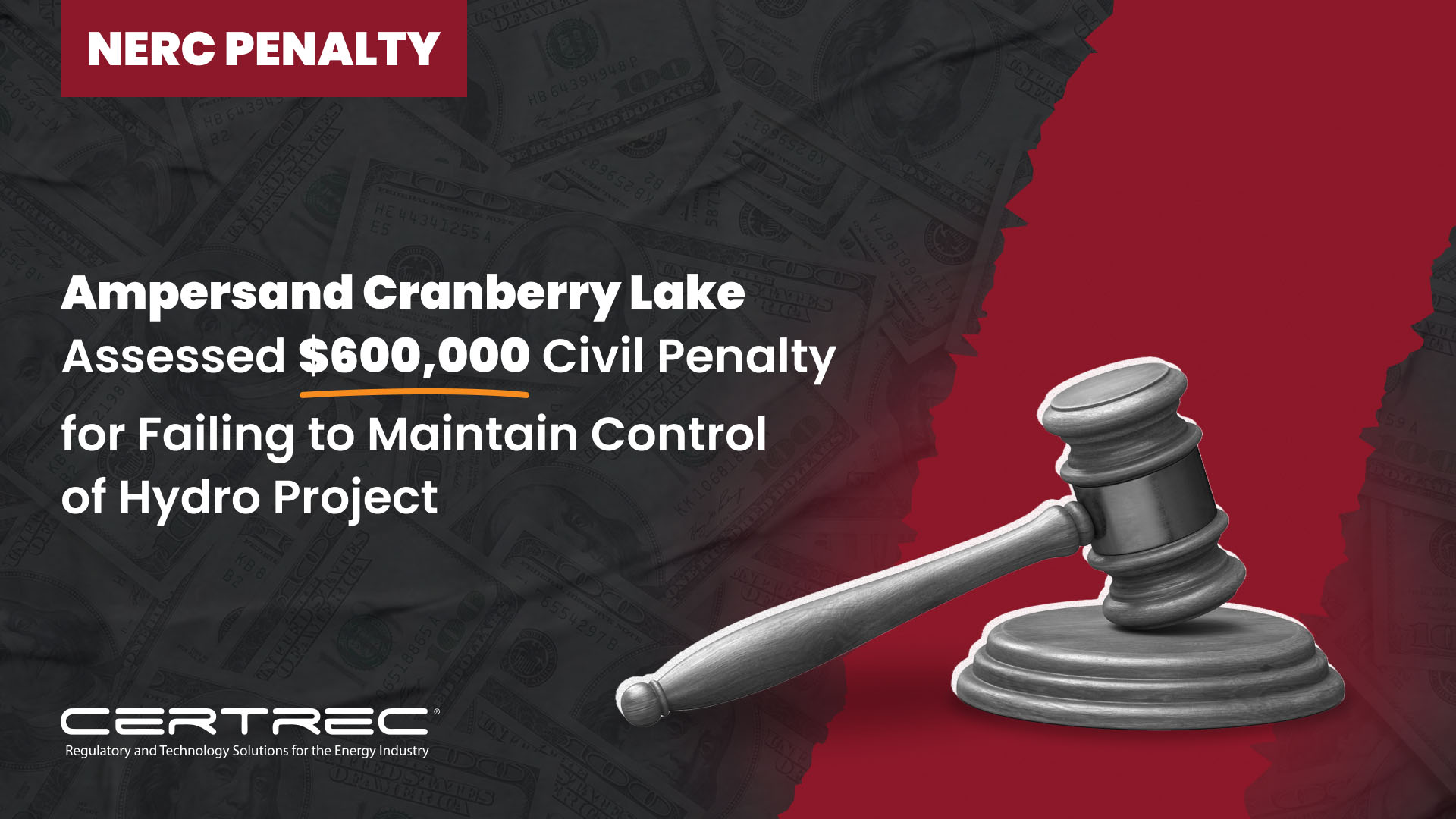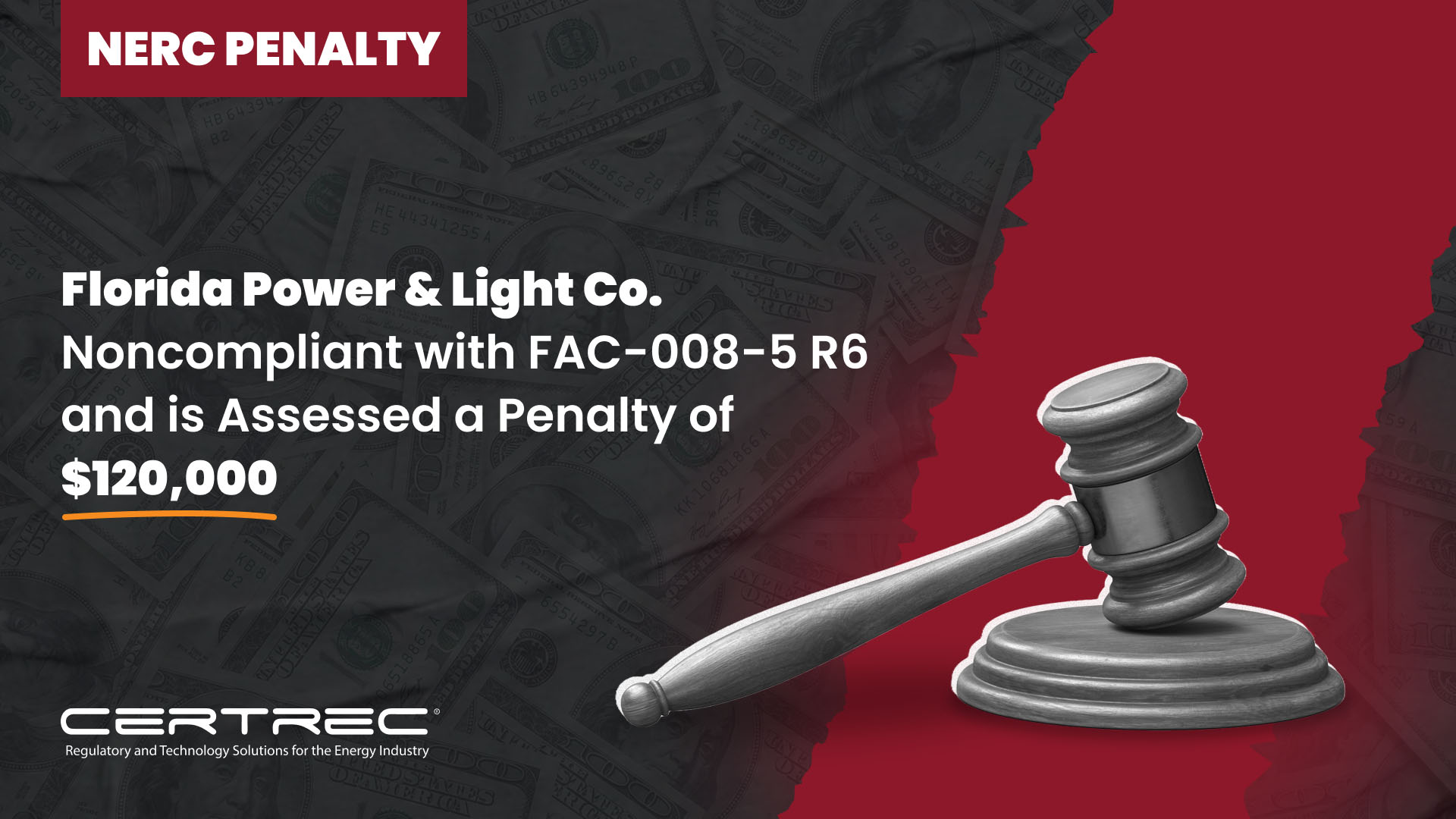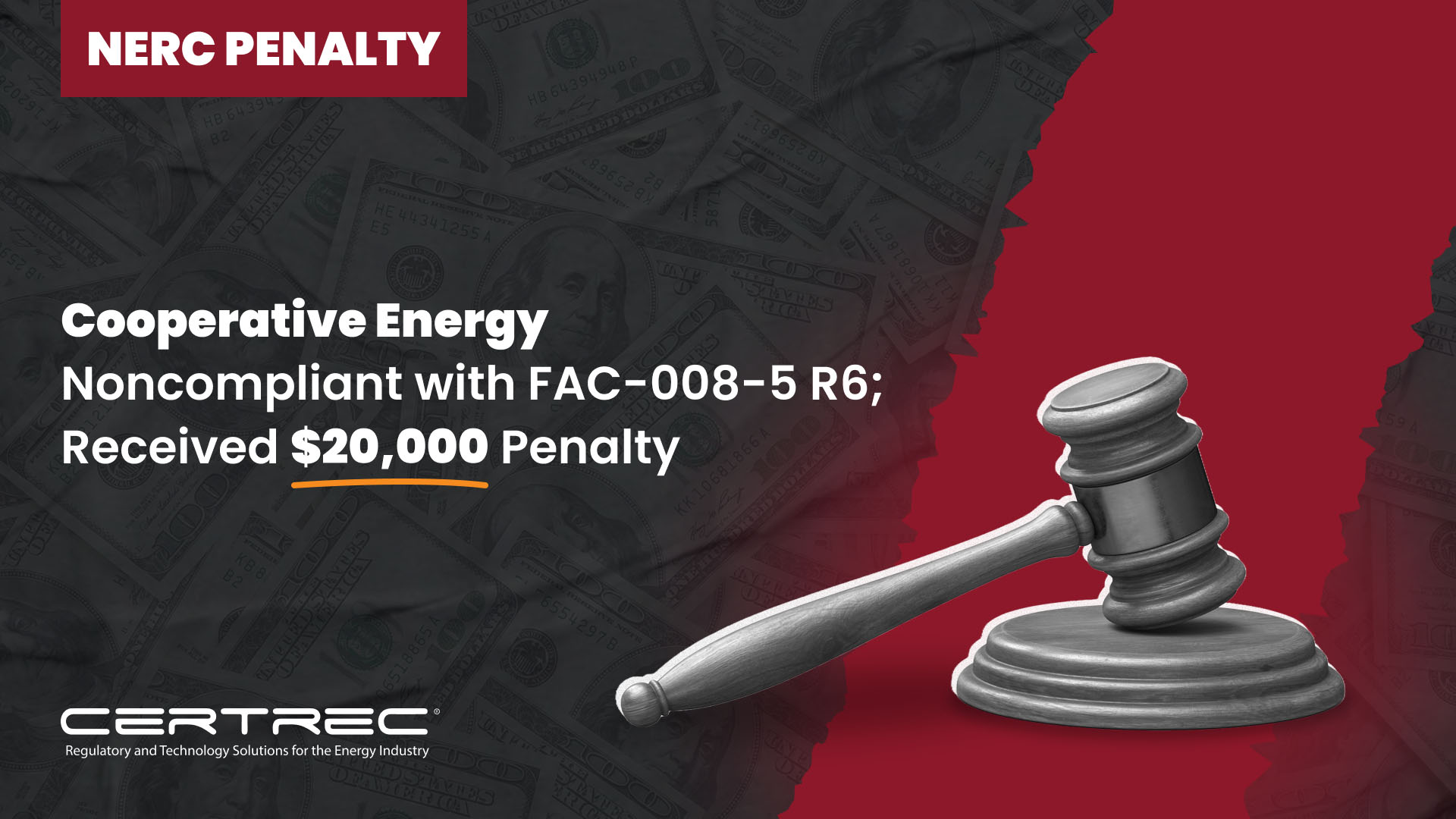Evergy, Inc. Faces $122,000 Penalty for Non-compliance with FAC-008-3 R6 Standards
Summary of NERC Penalties
REGION | WHEN? | ENTITY | COMPLIANCE AREA | VIOLATION | REASON | PENALTY AMOUNT |
|---|---|---|---|---|---|---|
NERC | Quarter 1 - February 2024 | Evergy, Inc. (EVE) | NERC's Regulations | FAC-008-3 R6 | Evergy, Inc. reported non-compliance with FAC-008-3 R6 after a merger. The company identified 133 Facility Rating errors across 363 facilities due to verification process deficiencies. These deficiencies included inaccurate records and methodology application which affected various facility types and led to rating discrepancies. | $122,000 |
Cause
The cause of the noncompliance was that the Entity had deficiencies in its Facility Rating verification process. Specifically, in the Entity’s original Self-Report, the source of record (99 drawings/one-line diagrams) was not fully inclusive of relay or conductor information (wire, bus work, etc.). In the first Scope Expansion, the Entity identified one issue where a transposition error occurred, resulting in an incorrect auxiliary CT circuit rating, and a second issue where the Entity inconsistently applied the Facility Rating methodology for auxiliary CT circuits within CT secondary circuits, resulting in four facilities where auxiliary CT circuits were not considered in the calculation spreadsheets. In the second Scope Expansion, the Entity identified a documentation issue where it incorrectly entered a CT ratio in a calculation spreadsheet.
The noncompliance started on August 28, 2015, when the Entity failed to establish Facility Ratings per its Facility Rating Methodology, and ended on October 28, 2021, when the Entity re-evaluated its switch nameplate ratings and updated its documentation.
Disposition
MRO did not consider the Entity’s compliance history to be an aggravating factor because this is the first FAC-008-3 violation under the newly formed registered entity. Additionally, the prior noncompliance under related Standards for the predecessor entities occurred well before the current noncompliance and mitigation for the prior issues would not have prevented the current noncompliance. Although one of the prior cases, SPP20100418 (Westar), involved a Spreadsheet Notice of Penalty with inaccurate Facility Ratings for 122 out of 199 transmission lines, the issues did not overlap with the current case.
MRO provided mitigating credit for cooperation, self-reporting and subsequent scope expansions, settlement, and the internal compliance program (ICP). EVE’s ICP has structures in place that promote internal self-identification and analysis of potential noncompliance. The ICP has processes in place for defining the operational leadership of compliance, documenting or tracking near misses, and for the anonymous reporting of compliance concerns. The ICP empowers the individual with day-to-day supervision of NERC Compliance to go directly to the most senior leader and/or the Board and has processes to involve senior leadership throughout the noncompliance process. In addition, when a potential noncompliance occurs, the ICP directs operational staff to be involved in the investigation of noncompliance and the creation of mitigation and has a process in place to delegate ownership and tracking of mitigation to the appropriate subject matter expert(s). The Entity was transparent throughout the reporting and mitigation process. In addition, the Entity performed full field walkdown verifications of all 363 in-scope Facilities as part of its mitigation plan.
A penalty of $122,000 was assessed.
About Certrec:
Certrec is a leading provider of regulatory compliance solutions for the energy industry with the mission of helping ensure a stable, reliable, bulk electric supply. Since 1988, Certrec’s SaaS applications and consulting expertise have helped hundreds of power-generating facilities manage their regulatory compliance and reduce their risks.
Certrec’s engineers and business teams bring a cumulative 1,500 years of working experience in regulatory areas of compliance, engineering, and operations, including nuclear, fossil, solar, wind facilities, and other Registered Entities generation and transmission.
Certrec has helped more than 200 generating facilities establish and maintain NERC Compliance Programs. We manage the entire NERC compliance program for 80+ registered entities in the US, Canada, and Mexico that trust us to decrease their regulatory and reputational risk. Certrec is ISO/IEC 27001:2013 certified and has successfully completed annual SOC 2 Type 2 examinations.
For press and media inquiries, please contact marketing@certrec.com.
Share








